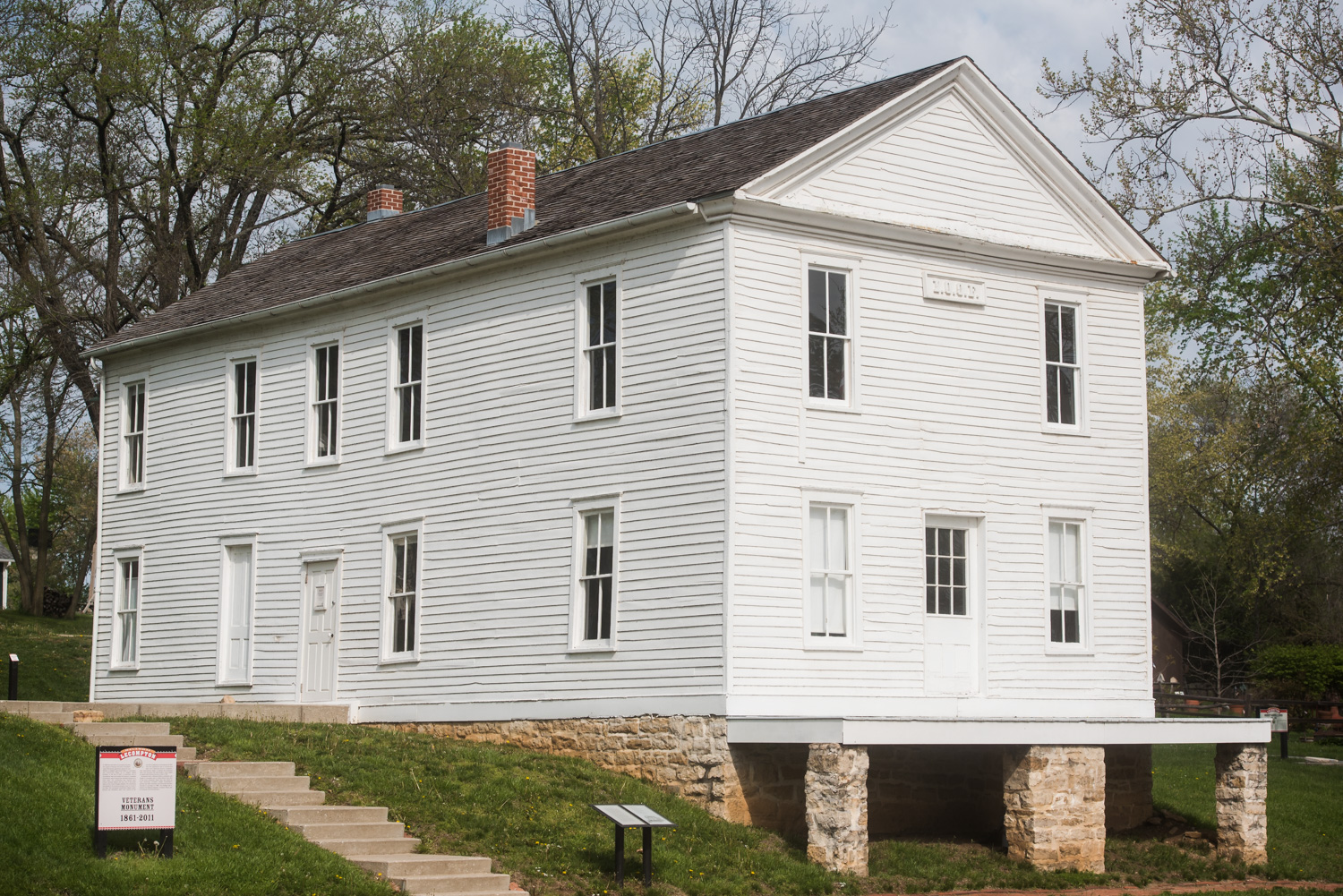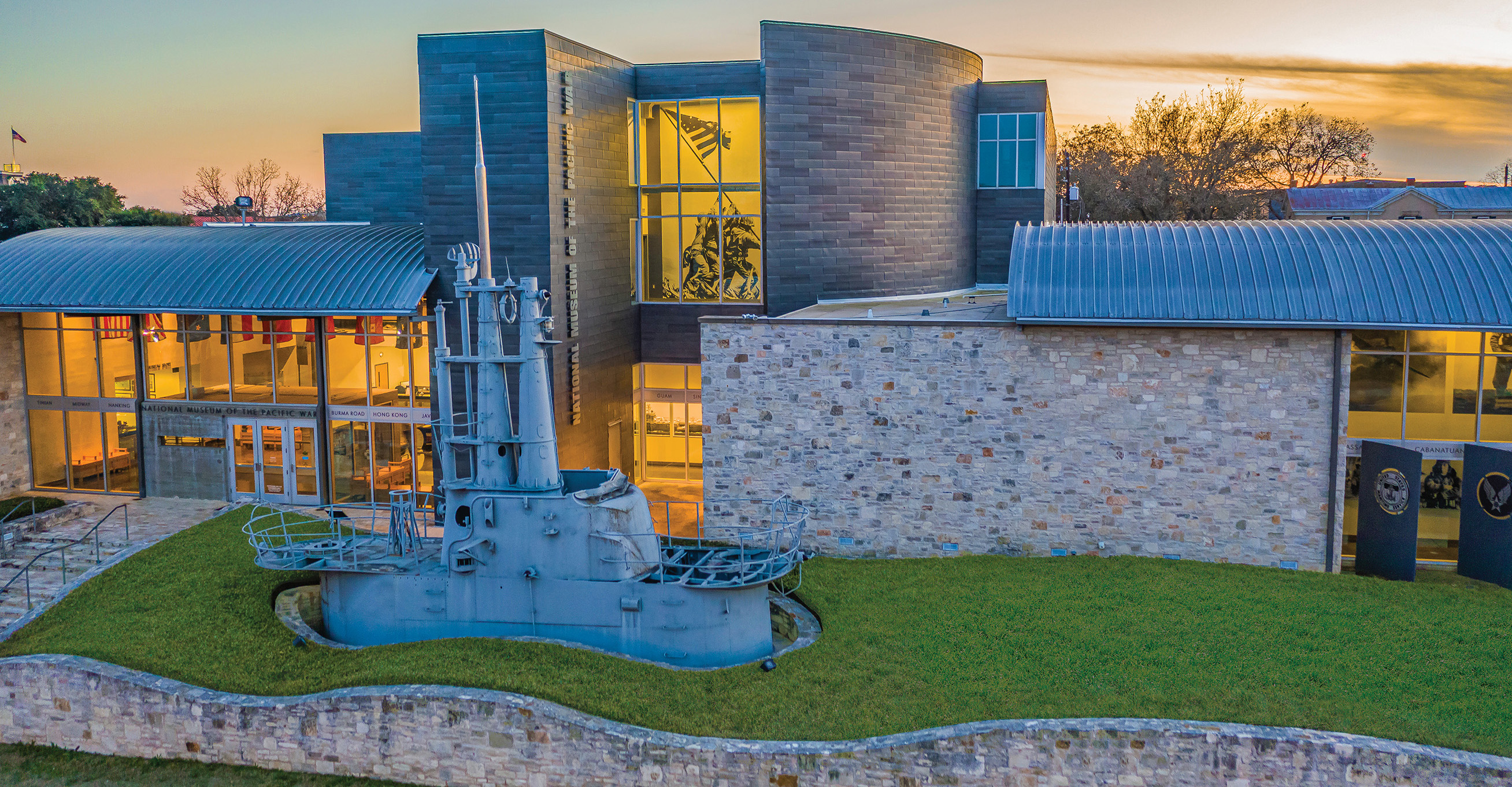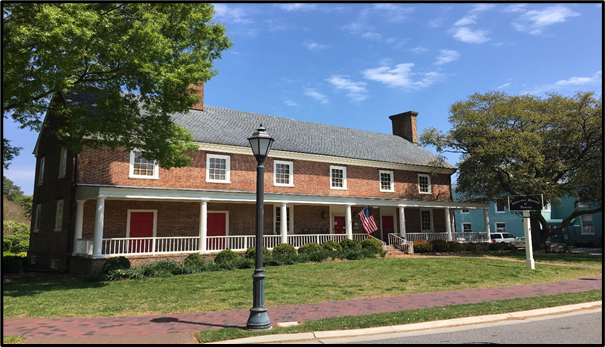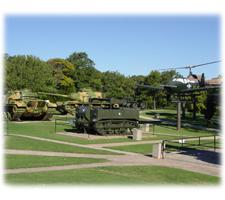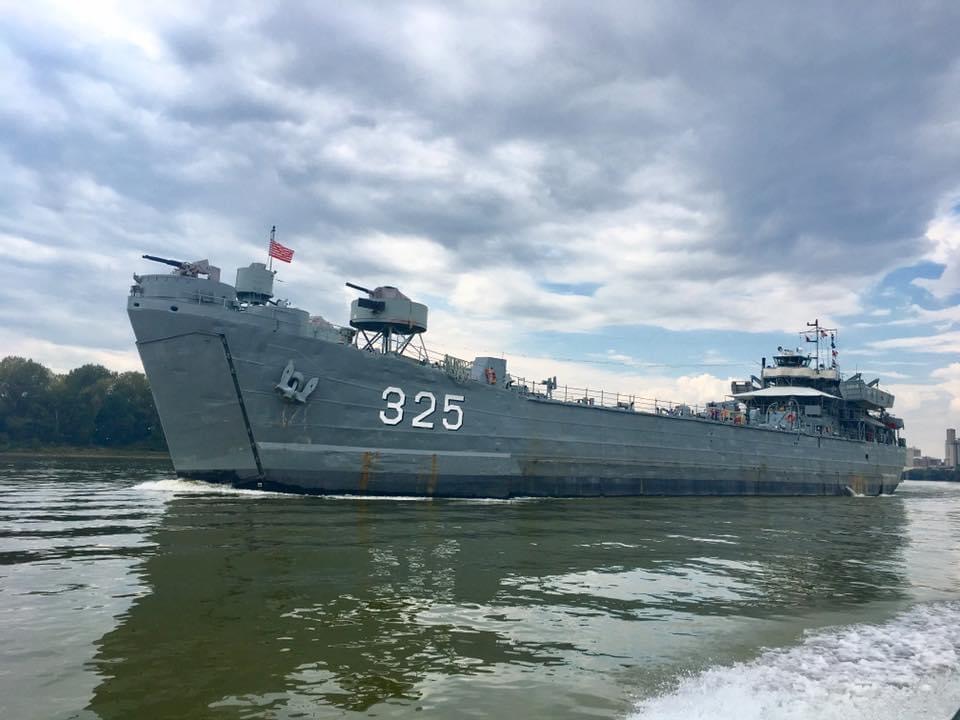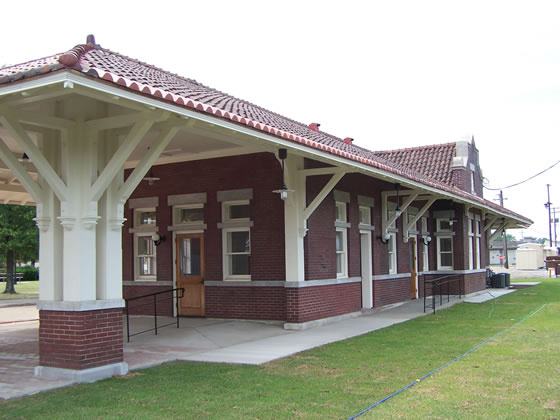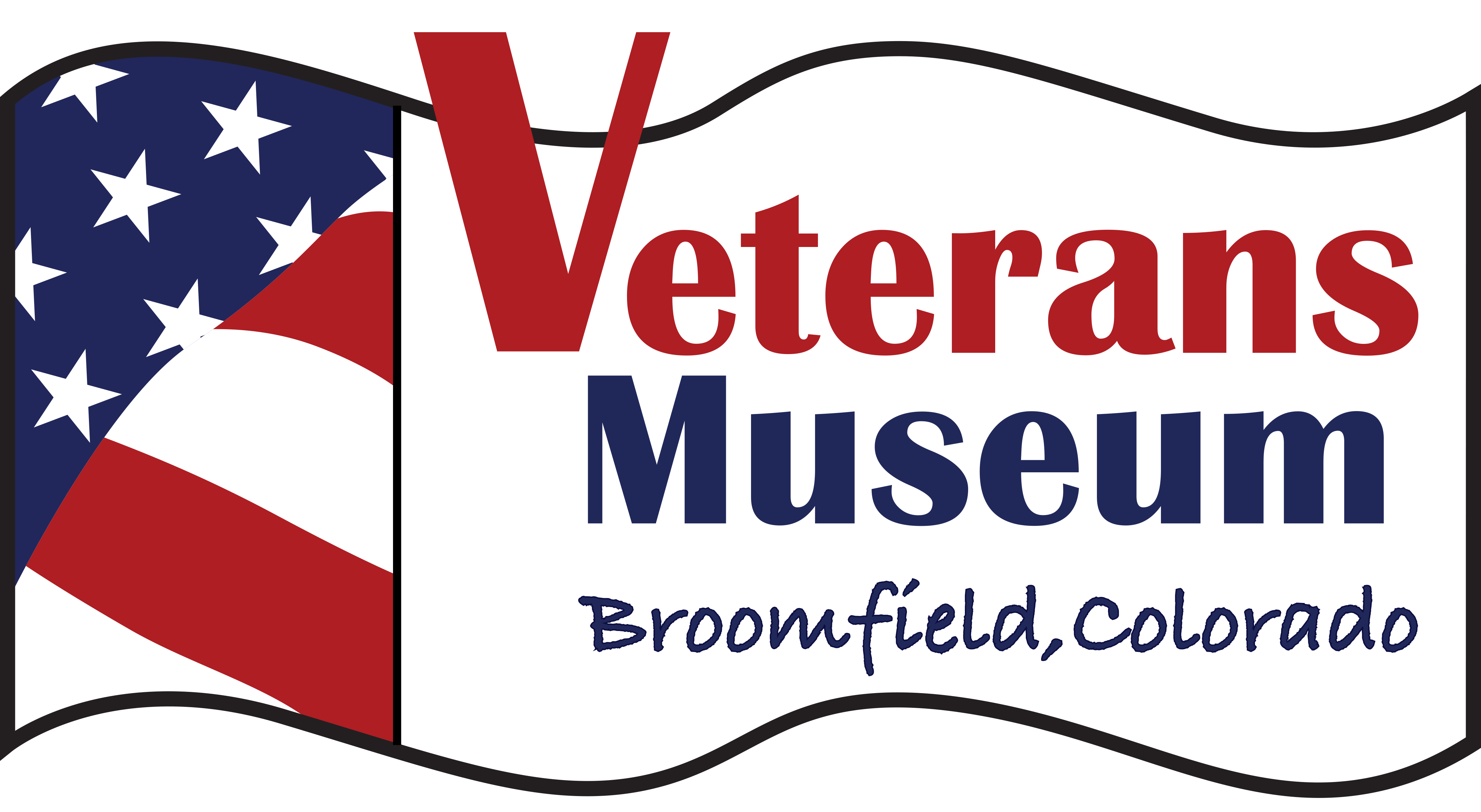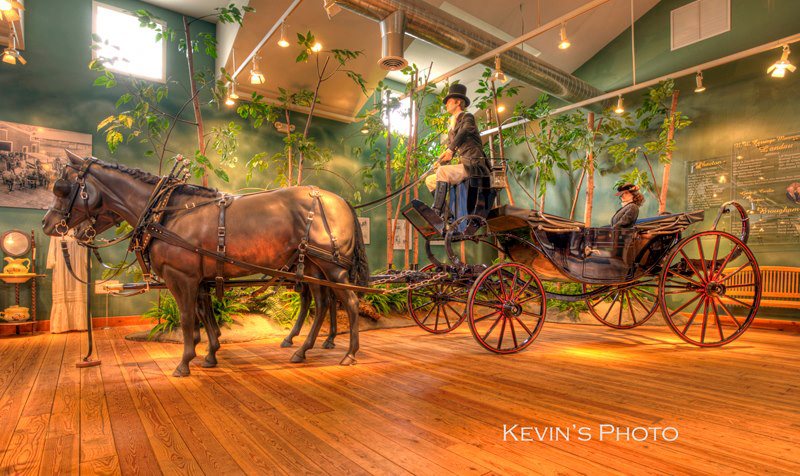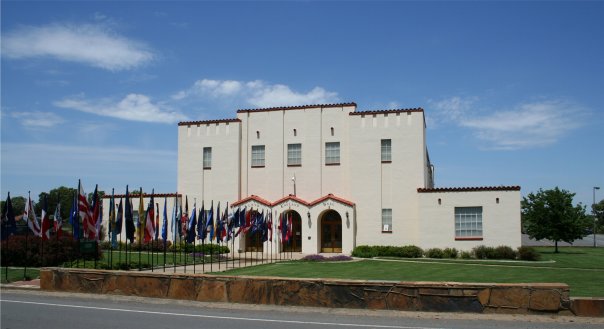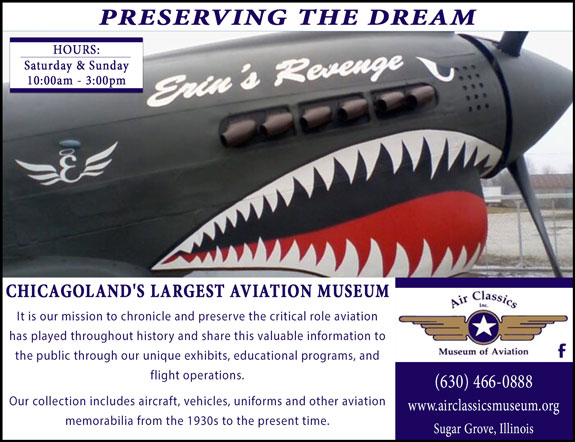Museum Guide News
Museum Guide News
Historic Lecompton was the Territorial Capital of Kansas from 1854 to 1861. This period was also known as Bleeding Kansas which was characterized by violent guerilla warfare between those who favored slavery in the future state of Kansas and those who wanted Kansas to be a free state. The wide spread controversy over the famous Lecompton Constitution, written at Lecompton’s Constitution Hall, resulted in Lincoln’s election as President and spurred the events that led to the Civil War. The Constitution Hall is now a National Historic Site. Lane University, 1868 – 1902, now the Territorial Capital Museum, was the college attended by Ida Stover and David Eisenhower, the parents of Dwight D. Eisenhower. Their marriage was held in the chapel of Lane University.
During the Christmas season, the Lecompton Historical Society hosts a fabulous display of over 200 Christmas trees bedazzled in Victorian, antique, vintage and themed ornaments and related décor. It is one of the largest in the Midwest. Lecompton’s quaint downtown includes a restaurant, winery and old fashioned mercantile that also attracts the museum goers. The Democratic Headquarters for the Kansas Territory, built in 1854, is near the Territorial Capital Museum and the original 1892 original jail next to Constitution Hall are open to visitors.
You might wonder why the National Museum of the Pacific War (NMPW) is located in a small, land-locked town in Central Texas. The answer is simple: Fredericksburg is the hometown of WWII hero Fleet Admiral Chester W. Nimitz. A world-class museum and now a Smithsonian Affiliate, NMPW is a six-acre complex housing 55,000 square feet of exhibits, a Memorial Courtyard filled with thousands of tributes to WWII veterans, a Japanese Garden of Peace and more. The Pacific Combat Zone is home to a battlefield emulating Pacific Islands and where Living History reenactments demonstrate weaponry, battle tactics and other resources used by both the U.S. and Japanese forces.
The Admiral Nimitz Gallery provides intimate glimpses into the life of Fredericksburg’s hometown hero. Almost 100 personal and family artifacts are displayed, dotting the rich biography of Nimitz from childhood through his retirement at the highest rank in the U.S. Navy. The Gallery boasts state-of-the-art interactives that engage and educate the entire family.
The George H.W. Bush Gallery chronicles the Pacific war, beginning with the “backstory” of the geopolitics that led Japan to attack the U.S. Exhibits answer questions such as, “Who was Ensign Sakamaki, the first POW of WWII?” Sakamaki’s story, along with the Japanese midget submarine he piloted during the attack on Pearl Harbor are displayed at the Museum. Ever wondered what an atomic bomb looks like? You can walk right up to a bomb casing identical to the casing on the Fat Man bomb that destroyed Nagasaki and which many say prompted the war’s end.
The artifacts themselves are impressive, but it is the stories of ordinary Americans who did the extraordinary that are inspiring. One of the staff’s favorite displays is a flag made by American POWs who for three years hid the stars from a flag they had to destroy to avoid its capture. When their liberation was imminent, they sewed a new flag with parachute material and the stars saved from their old flag. With over 5,000 oral histories housed in the Oral History Collection, visitors can listen to the voices of men and women who served on ships and planes, on the front lines, the home front, in hospitals and more.
NMPW welcomes visitors from all over the world. Fredericksburg is a picturesque town with German heritage, good food and plenty to do. Located in the heart of Texas Hill Country, it is slightly cooler and drier than its closest cities San Antonio and Austin. Visit their website which hosts many videos about the Museum and WWII history. Sign up for their email updates to be informed about webinars, onsite and virtual events, and Museum news. NMPW’s mission is to “educate and inspire present and future generations about World War II in the Asiatic-Pacific Theater and the continuing global relevance of its lessons.” They reach students with school visits, hosts many field trips and has a robust Distance Learning program that hosted 9,000 students in the past year – including some as far away as Ghana!
©2021 National Museum of the Pacific War All rights reserved.
By W Robert Kelly, Jr., Museums Coordinator - Gloucester County Parks, Recreation & Tourism
Prominently situated adjacent to the historic Gloucester Courthouse sits the 251-year-old Botetourt Building that now houses the Gloucester Museum of History. The imposing masonry structure dates from 1770 and first served as a roadside tavern. It is one of the largest, as well as one of the few brick taverns surviving from the pre-Revolutionary period. The building served as lodging for Gloucester’s visitors from the 1770s through the 1950s, first as a tavern and later as a hotel. In 1965, the county purchased the property to be used as offices. In 2000, the building became home to the Gloucester Museum of History. Today, the museum preserves and interprets the county’s rich history through exhibitions, programming, and a 3,000-object collection.
Caption: A 2021 view of the Gloucester Museum of History from the northeast
From the earliest days when the Virginia Indians called the area home, to more recent stories related to Civil Rights, the museum interprets the county’s complete history. One of the newest exhibits is “Awakening: The Life & Legacy of T.C. Walker” unveiled in 2021. Featuring a reproduction of the T.C. Walker mural from Main Street, the exhibit examines the life story of the first African American lawyer in Gloucester County. Born enslaved, Walker went on to graduate from Hampton Institute, and would later serve as Superintendent for Gloucester Negro Schools and as a member of the Gloucester County Board of Supervisors. He lived through the Reconstruction and Jim Crow eras and did great things to help African Americans across the Commonwealth. It is hoped that visitors will explore the stories from the mural, learn about the life of a local hero, and be inspired to make a difference in their community.
Caption: “Awakening: The Life & Legacy of T.C. Walker” is the museum’s newest exhibit.
Additional exhibits related to the American Revolution and Civil War are located on the museum’s second floor. This space is particularly interesting as it retains considerable original historic fabric from the building’s early use as a tavern. Original hardwood floors and window trim within the large “ballroom,” present an atmosphere reminiscent of the 18th century and Colonial Williamsburg. The large basement contains additional exhibits featuring artifacts that tell the stories of Gloucester’s agricultural history and the importance of the county’s daffodil industry.
To complete a visit requires experiencing the other museum properties and the Gloucester Visitor Center, all located within the historic courtcircle, less than 100 feet away. The circle contains five historic structures: the 1766 Colonial Courthouse, two former Clerk’s Offices, (the 1823 Clayton Building and the 1896 Roane Building), a jail constructed in 1873, and a debtors’ prison that dates to 1824. The Colonial Courthouse, one of the oldest in Virginia, is still used for official county functions. The Visitor Center boasts a new interactive exhibit about Werowocomoco, Pocahontas, and the Virginia Indians, and provides an experience for tourists and residents alike. It is a great place to visit for local information or to find a unique gift. To learn more about the Gloucester Museum of History please visit https://www.gloucesterva.info/820/Museum-of-History or call 804-693-1234. The museum is open Monday-Saturday, 11:00AM – 3:00PM and admission is free.
Located at 2145 NE 36 th St., the 45 th Museum sits less than a mile West of I-35 on NE 36 th St.The museum boasts 27,000 square feet and a fifteen-acre military park containing over 70military vehicles, tanks, artillery pieces, aircraft, and ancillary equipment.Within the walls of the old 1936 WPA armory you will follow Oklahoma’s military history from the time of the conquistadores to modern times.Among the thousands of artifacts on exhibit you’ll see several special collections. The museumis proud to display the Jordan Reaves US Military Firearms Collection, the third largest of itskind in the nation.The largest collection of items once the personal property of Adolf Hitler on public display in theworld (there are larger collections but not on display).The Bill Mauldin Art collection. Bill Mauldin began his military career in the 45 th Divisionbefore WWII. On display here is the largest collection of Bill Mauldin’s original, Willie & Joecartoons as he drew them in the field during the Second World War. Mr. Mauldin received thePulitzer Prize for this body of work.In our Supporting Forces Hall, you’ll bare witness to the many achievements of the OklahomaAir National Guard and Oklahomans in military aviation, here too is where we maintain all themuseum’s operational vehicles and aircraft.The Museum is open Tuesday through Friday from 9:00 am till 4:14 pm. The park is closed notlater than 5:00 pm. Weekends we’re open, Saturday 10:00am to 4:15 pm and Sundays 1:00 pm to4:15 pm.As always, the museum is FREE.Currently the 45 th Infantry Division Association is raising funds with the “Walk of Honor”,they are selling bricks onto which you can have engraved information about any honorablydischarged veteran. Funds raised will not only support the museum but pay for severalmonuments to be erected at American Military Cemeteries in Europe.For more information email curator@45thdivisionmuseum.com or call 405.424-5313.
The USS LST Ship Memorial, Inc. is the owner of a wonderful ship that is located in Evansville, Indiana. How did this come to be? A war ship in Indiana?
During World War II, there were many inland shipyards that built shallow draft vessels to support the war effort. Landing Ship, Tanks were one of those vessel types. Evansville, Indiana was the location of one of these shipyards and therefore is a very appropriate home port of LST 325.
Hundreds of thousands of men either served on LSTs or were transported with various types of equipment. The 1,051 LST’s that were built in American shipyards were designed for amphibious landings that were critical to the Allied Forces. After the war, these ships were often given to other countries to help them recover from the horrors of war. Some remained in active use during Korea and Vietnam. Others were ‘mothballed’ for future use, some were scrapped.
Moving forward fifty years, a group of men began looking for a suitable LST to establish a Museum Ship to commemorate those who built, sailed and served on this type of ship. Their goal was to obtain a ship for a museum and to educate us about the importance of the LST. In the late 1990’s, Mr. Ed Strobel located a few of them that were being scrapped by Greece, one of the Allied countries that received ownership of some LSTs after World War II.
After much investigation, negotiation and an act of the U. S. Congress, a group of 35 men were selected and set off to ensure the ship was seaworthy and ready to sail the ship back to the United States. With no taxpayer funding and no guarantee of assistance, these men funded themselves, the ship’s requirements, their travel and living expenses. Funds were raised or donated to buy equipment and parts, fuel and oil, insurance, and navigation tools. The work was performed by the men who traveled to Greece, with some assistance by our Allies and the Military. 28 of the group of 35 men sailed the ship 6,000 miles back across the Atlantic. The average age of the group was 72.5 years old.
The LST-325 is the ONLY WWII-configured landing ship, tank still in operation. This historical ship relies on private donations and hundreds of thousands of volunteer hours to function. The ship is located at Evansville, Indiana for 11 months of the year; the other month the ship cruises to other cities to educate the public regarding their involvement and importance during WWII, Korea and Vietnam. Please come and visit us - enjoy a docent led tour of LST 325 and visit other wartime museums in Evansville!
USS LST Ship Memorial, Inc., 610 NW Riverside Drive, Evansville, IN 47708
812-435-8678 www.lstmemorial.org Facebook: USS LST Ship Memorial, Inc.
A 501(c) 3 Entity. Author Susie Bloom
Although it receives visitors from all over the world, and hundreds of schoolkids a year on field trips, and is well-known among buffs of historic fire apparatus, the Hall of Flame Museum of Firefighting still considers itself one of Phoenix’s too-well-kept secrets. The world’s largest museum of firefighting history is a hidden gem known locally mostly by word of mouth.
The museum is located along East Van Buren, near the Phoenix Zoo, the ASU baseball stadium (Phoenix Municipal) and the Salt River Project building. It’s been in this location since the early ‘70s, after its relocation from Wisconsin. It was founded there in 1961 by businessman George Getz, Jr., due to an unusual Christmas gift he received in 1955.
Getz had noticed a vintage fire truck alongside the road while driving through Illinois with his family that year, and remarked admiringly of it. His wife Olive and son Bert arranged to buy the vehicle—a 1924 American La France Type 12 pumper—and gave it to him for Christmas as a rather elaborate gag gift.
The result, however, was the beginning of a lifelong fascination for Getz with the history and technology of firefighting, which led to the foundation, just six years later, of a museum in Kenosha, Wisconsin, devoted to preserving the traditions of the fire service. Getz dubbed the new facility the Hall of Flame, making it the rare example of a museum with a pun for name. Some years later, the Getz family moved their business and home base to the Valley, and brought the Hall of Flame collection with them.
The Hall of Flame’s galleries are home to more than 100 pieces of larger apparatus, spread out over six galleries and ranging from the early 18th Century to the 21st Century. Gallery 1 features an English hand pumper built in 1725, a spectacular hand pumper built in Philadelphia in 1844 that spent its career in Pawtucket, Rhode Island, and a parade carriage built in New York in 1870 that represented the Hotchkiss Fire Department of Derby, Connecticut, but looks more like what Cinderella rode to the ball in.
Gallery 2 contains fire trucks primarily from the first half of the 20th Century, including an 1897 Champion-Christie water tower from Toledo, Ohio and a 1919 Mack bulldog army truck converted into a fire truck by the fire department of Baltimore, Maryland by the addition of a previously horse-drawn ladder wagon and a chemical cart. This gallery is also home to a visitor favorite, the 1935 American La France 400 series pumper from Norfolk, Nebraska, with its memorable white paint job, and a 1921 Seagrave pumper that served the Phoenix Fire Department until about 1950, and was eventually rescued from the desert near Taos, New Mexico and returned to its former beauty by the Hall of Flame’s late restorer Don Hale.
Gallery 3 contains vehicles of more recent vintage, many of which are used in parades and other public events around the area, as well as an exhibit on the Phoenix Fire Department’s call center. It’s also the home of the FDNY’s Rescue 4, which responded to the World Trade Center in Manhattan on September 11, 2001, and whose entire crew was lost.
Gallery 4 features a similarly solemn exhibit; one of the two transport buggies which carried the Granite Mountain Hotshots of Prescott, Arizona to the Yarnell Hill Fire of 2013, resulting in the loss of 19 members of that crew (the other vehicle is at the County Fire Museum of Los Angeles). The gallery also displays large ladder rigs and most of the Hall of Flame’s extensive, world-wide shoulder patch collection.
Along with these large galleries, the Hall of Flame also has a video theater which also features a fine collection of antique helmets from around the world, a Hall of Heroes memorializing firefighters who have died in the line of duty or been decorated for bravery, and a wildland gallery devoted to smokejumpers, hotshots and firefighting aviation. Throughout the museum, you’ll find early insurance marks, historical fire extinguishers and more. At the rear of Gallery 4 there’s a hand-on children’s activity area, and, in Gallery 2, possibly the museum’s most well-loved piece: a 1951 American La France from Miami, Arizona that kids, and grown-ups, can climb aboard and play on.
These exhibits have all been familiar to visitors for many years. But during the Museum’s recent closure to the public due to the COVID-19 pandemic, between mid-March and the re-opening in early July, the Hall of Flame has taken the opportunity to make many improvements to the facility, as well as add new exhibits and expand existing ones. The Kids’ Area and several other parts of the Museum were repainted and/or refloored, and new décor was added.
New exhibits have been added, including a display depicting the evolution of EMS equipment in the Hall of Heroes, an exhibit devoted to early firefighting equipment in Gallery 1 and a display on the firefighting comic strip Smokey Stover in Gallery 2. Also in Gallery 2 is an 8-to-1 scale model of a 1933 Ahrens-Fox C-T-4 pumper, donated to the Hall of Flame, along with its impressive display case, by the late Bert Hansen of Boulder City, Nevada. At the entryway to Galleries 3 and 4 is a new computer station allowing access to information on the Hall of Flame’s 7,000-strong collection of arm patches
Along with these enhancements, the Hall of Flame has also been attempting to increase its virtual profile, by presenting the collection through the Hall of Flame YouTube Channel, offering both video “tours” of many of the most prominent exhibits, and by continuing its educational mission with many story time videos of classic firefighting children’s stories like No Dragons for Tea, Hercules, Bravest of All, Fireboat, The Fire Cat, The New Fire Engine, The Too Little Fire Engine, Pink Fire Trucks and Curious George and the Firefighters, among others. Some of these stories, notably Curious George and the Firefighters and Pink Fire Trucks are available in Spanish as well. These videos are available for free on the Hall of Flame Museum’s YouTube Channel, as a homeschooling option in history or science.
The WWII Japanese American Internment Museum McGehee, Arkansas, serves as an interpretive center for both camps that were in Arkansas during WWII, Rohwer and Jerome. These 2 camps were the 2 furtherest east. There were no camps east of the Mississippi River.Since opening April 16, 2013, there have been close to 17,000 visitors from all50 states and 56 countries. Many former internees from these 2 camps visit every year. Each year close to the anniversary date, a Reunion is held, except for 2020 and 2021 due to Covid.12 miles north of McGehee is the location of the Rohwer camp. There is a cemetery that was not a part of the camp but was adjacent to it. You can look around at the farm land and see how large the camp was.The cemetery has 24 headstones and 4 large monuments. 1 of the monuments is shaped like a tank and is dedicated to the honor and memory of the 100/442. In the distance you can see the smokestack from the hospital boiler room.George Takei, Mr. Sulu from Star Trek, was at Rohwer with his family when he was 5. Because of the way his father answered the loyalty questionnaire, they were sent to Tule Lake in northern California.If you are ever in southern Arkansas, stop by the museum to see the exhibit“Against Their Will”. The Japanese Americans have asked that we keep their story alive, and that is what the museum is there for so this will never happen again.The Japanese Americans have 2 phrases that say it all:Shikata ga nai - It cannot be helpedNidoto nai yoni - Let it Not Happen Again
The Broomfield Veterans Museum reopened in February and resumed its mission: to honor local veterans of all the United States’ conflicts and peacekeeping efforts from the Civil War to the present, in all branches of service, by telling their stories.
The museum houses nine rooms of exhibits, a military history library of over 2,500 volumes, and a small auditorium that hosts presentations by veterans and historians. It is free and open to the public and offers docent-guided or self-guided tours.
The museum is still—with virus precautions of course—a center for veterans to connect, students to learn about our nation's history, individuals or groups to explore the rotating exhibits, and families to honor their loved ones who served in the military.
The virus has curtailed many of the its outreach activities so far, but the museum has resumed its Coffee and Conversation speaker series—a twice-monthly presentation by a veteran or historian in the auditorium. These talks are scheduled for the second and fourth Saturday of each month and start at 10 AM.
The museum was founded in 2003 by six late Broomfield-area World War II veterans, whose legacy is now carried forward by a team of volunteers, many of whom are veterans themselves. All are invited to come see the displays and hear the stories.
The museum is located at 12 Garden Center, Broomfield, on the north side of Midway, about a quarter mile east of Wadsworth (287). Hours: Thursday 10 AM to 2 PM; Saturday 9 AM to 3 PM. Mask required. Phone number: 303-460-6901; website www.broomfieldveterans.org, email broomfieldveterans@gmail.com.
The Northwest Carriage Museum in Raymond, Washington is Pacific County’s largest year round tourist attraction. The Museum houses one of the finest collections of 19th century horse drawn vehicles in the entire country. Visitors are pleasantly surprised to find such a world class collection of horse drawn vehicles in the tiny town of Raymond. The Museum is family friendly, educational and you’ll find that there is something for everyone!
The Northwest Carriage Museum opened in 2002 as a result of a very generous donation of 21 carriages from a local family. Over the years, the collection has grown to over 58 vehicles including a variety of carriages, buggies, wagons, sleighs and commercial vehicles. The museum’s collection includes an 1888 Stagecoach, featured on Travel Channel’s “Mysteries at the Museum,” a 1900 hand carved hearse from Vienna, Austria, a Chuck Wagon, a beautiful cut under Wicker Phaeton, a 1880 Mail Wagon along with the magnificent Brewster Summer Coupe Brougham. Several of our vehicles were used in movies classic’s such as our C-spring Victoria used in Shirley Temple’s “Little Princess” and our famous Shelburne Landau which was Belle Watling’s carriage in the classic “Gone with the Wind.”
In addition to our many vehicles, the museum houses many other period artifacts from the 19th century. Clothing, travel trunks, harness gear, hand tools, carts and an amethyst glass collection is beautifully displayed
The Northwest Carriage Museum is located at the junction of Hwy. 101 and State Route 6 in Raymond, Washington. Right outside our doors is the beautiful Willapa River and a well maintained park which is the perfect place for you and your family to enjoy a picnic. Within walking distance are restaurants, and shopping opportunities.
The Northwest Carriage Museum is open year round from 10am to 4pm. We have a unique gift shop featuring a variety of jewelry, books, toys and local products. Group tours are our specialty and can be arranged in advance. We have admission discounts for families, seniors and military personnel. AAA members can show their card and save as well.
We believe you will love your visit to the Northwest Carriage Museum and hope you visit soon. Visit us at www.nwcarriagemuseum.org or call us at 360 942 4150 for additional information. You can also find us on Twitter, Facebook, Pinterest and Instagram.
COME GET CARRIED AWAY AT THE NORTHWEST CARRIAGE MUSEUM!
At the Arkansas National Guard Museum, you will experience the rich history of the Militia and National Guard in the territory and state, including the Civil War years and the 206th Coast Artillery who fought in World War II. The Museum also has displays on the Militia’s role in the Mexican War, as well as the Guard’s involvement in the Spanish American War, World War I, the Korean War, Desert Storm, and the Global War on terror.
In addition, the Museum preserves the history of Camp Robinson. The Post was built in 1917 as Camp Pike to train soldiers for the First World War. By the end of the War in November 1917, Camp Pike had a population over more than 54,000 troops. In 1922, the Post was handed over to the Arkansas National Guard. During the late 1930s, the Post was renamed Camp Joseph T. Robinson after the Arkansas senator passed away.
In 1940, the federal government took over the Post, and trained troops for the Second World War, mostly for infantry and medical replacement. There were possible 100,000 troops at Camp Robinson by 1943. You can also learn at the POW camp on Post that kept around 3,000 captured German soldiers.
The Museum also houses almost 200 weapons known as the Yeater Collection that date from the early 19th century to the WWII years.
The Arkansas National Guard Museum is located in the historic Lloyd England Hall on Camp Robinson, North Little Rock, Arkansas.
